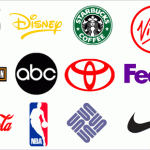At What Point Do You Admit That Your Marketing Campaign..well..Sucks?
Sometimes you just have to cut your losses, admit that what you were trying to do or the way you were doing it simply doesn’t work. That’s the time to stiffen your upper lip and get back to that drawing board. No shame there…
Here’s another gem from HubSpot writer Sarah Goliger :
“3 Signs It’s Time to Pull the Plug on Your Marketing Campaign
Ever heard the expression “don’t throw good money after bad”? Ever started something — maybe a report or a blog post — that began getting worse and worse, but you kept writing it anyway? Ever worked on a project that was clearly not going to solve your problem, but you just continued working on it?
These are examples of what is referred to in psychology as “escalation of commitment.” It is a force that drives many irrational decisions, such as, in these cases, wasting more time writing your post when the choice of topic was terrible, or continuing a project that won’t have any value down the line. But we’ve started these things, and we’ve somehow made a commitment to them. And even though it makes more sense to quit while we’re ahead, we often don’t do that.
When it comes to the world of marketing, escalation of commitment can be extremely dangerous.
The Story of a Money-Sucking Sweepstakes
On June 1st, HubSpot launched a Marketing Library Sweepstakes on Facebook in an effort to drive prospect generation by collecting email addresses of contest entrants as well as to spread reach by increasing HubSpot’s number of Facebook likes. The goal was to double our number of Facebook likes from 25,000 to 50,000, thereby retrieving about 25,000 email addresses.
Our original idea for the contest prize was an offer of “HubSpot software for life,” but we weren’t how we could manage such a grand offer. After contemplating other ideas, we decided the prize would be a collection of about 15 of the best marketing books, including some by David Meerman Scott, Guy Kawasaki, Tim Ash, and more famous authors. At the suggestion of the third-party company with whom we worked to administer the contest, we also included an iPad2 to make the prize bigger and more attractive. The sweepstakes was scheduled to run for the two months of June and July.
About two weeks into the contest, we started to get concerned. Our numbers were looking atrociously low, and while we were able to triple the average number of Facebook likes we were generating per day, we weren’t getting enough new email addresses. So we sat down and looked at the numbers. Many charts, graphs, and calculations later, we had both visual and numerical evidence that we were not going to meet our initial goals or break even on cost of running our campaign. Our contest administrator informed us that the average visit-to-entry conversion rate for this type of contest was between 20-40%, and ours was coming in around the low-end at about 20%. We were paying about 4 times what we typically equate one email address costs. In short, we weren’t getting nearly enough value for the cost, and it didn’t look like we were going to, based on our projected growth trends.

So, we pulled the plug. The cost was sunk, we were devoting too much time to this project, and it wasn’t delivering. We decided to cut our losses to the greatest extent possible by ending the contest immediately.
What Went Wrong?
Our speculation is that, given the prize, our goal of 25,000 new prospects and our two-month timeframe were both unreasonable. The prize simply was neither attractive enough to reel in such a high number of entries, nor exciting enough to generate buzz for a full two months.
So why didn’t we give away something bigger? Maybe a nice sports car or a Caribbean vacation? We’re sure these prizes would’ve driven many more entries to our contest, but we chose to offer a prize that would yield higher-quality prospects. In other words, the people who are interested in winning top marketing books are more likely to be interested in HubSpot than are all those people interested in winning a flashy car or vacation. In a nutshell, we traded in quantity for quality.
Essentially, we overestimated the number of prospects we could generate by offering the prize we had chosen, so we were willing to spend more money on the project. When we realized that we were not going to generate enough new email addresses to break even on our costs, we pulled out and ended the sweepstakes.
How to Know When to Pull the Plug on a Campaign
These are the 3 questions you need to constantly be asking when you’re running a marketing campaign.
1. Are you getting enough value out of the money you’re spending? Are you going to break even on it?
Our answer: No. We were spending nearly four times as much as we wanted to be spending on each prospect. The cost far exceeded the value.
2. Is the projected trend going to increase your yield enough to warrant continuation of the project?
Our answer: No. The projected trend was an increasing number of Facebook likes and contest entries, but the rate at which these were projected to increase was far too low to break even.
3. Would you be saving more time and money if you wait until later to pull the plug than you would if you do it now?
Our answer: No. We’d be saving the most time and money if we end it now rather than later.
If you answer “no” to any of these questions in your own evaluation, you should stop and take the time to run an analysis of where you stand with your campaign. Don’t escalate your commitment to an underperforming project when the value isn’t exceeding the cost. Pull the plug, and put your resources to better use. Then explain to your fans why you had to end it early and apologize for being unable to extend your campaign further.
Have you ever needed to make the tough call to pull the plug on a campaign you ran?






